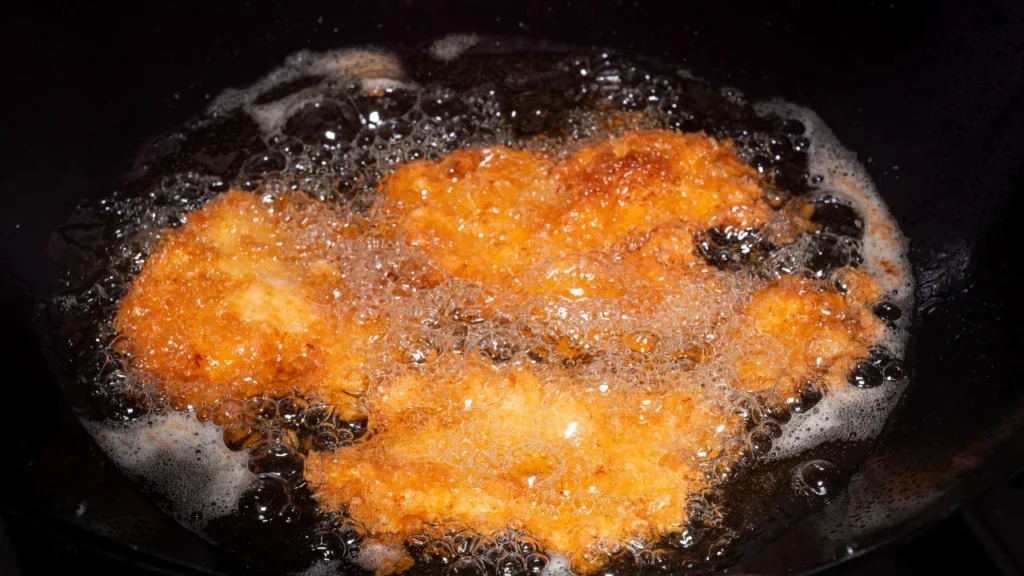Frying is a cornerstone cooking method in the culinary world, celebrated for delivering crispy textures and rich flavors. From classic fried chicken to golden French fries, frying remains a staple in kitchens worldwide. However, advancements in technology have introduced innovative tools like Frylow, designed to enhance frying efficiency, reduce costs, and improve food quality. In this blog post, we’ll explore traditional frying methods and compare them with Frylow technology, offering insights from a chef or restaurateur’s perspective.
Understanding Frylow Technology
What is Frylow?
Frylow is an innovative oil optimization device designed to improve deep frying efficiency. Using advanced ceramic technology, Frylow helps reduce oil absorption in food, extend the lifespan of frying oil, and enhance the quality of fried dishes.
How Frylow Technology Works
Frylow works by emitting negative ions into the frying oil. These ions reduce the oxidation and polymerization of the oil, slowing down its degradation. This process enables chefs to fry food at lower temperatures while maintaining quality and crispiness.
Key Features of Frylow
- Extended Oil Lifespan: Significantly increases the duration frying oil can be used before replacement.
- Lower Oil Absorption: Reduces oil uptake in fried foods, resulting in healthier meals.
- Energy Efficiency: Allows frying at lower temperatures without compromising results.
- Enhanced Food Quality: Delivers consistent color, texture, and flavor.
Traditional Frying Methods

Overview of Popular Traditional Frying Methods
Traditional frying methods involve submerging food in hot oil at temperatures typically ranging from 350°F to 375°F. Common techniques include deep frying, shallow frying, and pan frying. Each method relies on maintaining consistent oil temperature and using fresh oil to ensure optimal results.
Pros and Cons of Traditional Frying
Pros:
- Familiar and widely practiced.
- Does not require additional equipment.
- Effective for achieving crispy textures.
Cons:
- Frequent oil replacement is required.
- Higher oil absorption in foods.
- Inconsistent results depending on oil quality and temperature control.
- Increased operational costs due to oil usage and energy consumption.
Frylow vs. Traditional Frying: A Comparison
frylow-vs-traditional-frying.webp
File name: frylow-vs-traditional-frying
Alt text: French fries shown fried with Frylow and without.
Efficiency
Cooking Time
Frylow allows frying at slightly lower temperatures, which can result in more consistent cooking times without overcooking or undercooking food.
Energy Consumption
Traditional frying often requires higher temperatures and longer cooking times, leading to increased energy usage. Frylow helps reduce energy consumption by maintaining optimal frying conditions.
Oil Usage and Quality
Oil Absorption Rates
Traditional frying often results in higher oil absorption, which impacts the taste and nutritional value of food. Frylow minimizes oil absorption, producing lighter, less greasy dishes.
Frylow’s Impact on Oil Lifespan
Oil in traditional frying degrades faster due to oxidation and temperature fluctuations. Frylow extends oil life, reducing the frequency of oil replacement and overall costs.
Health Considerations
Oil Retention in Foods
Traditional frying tends to leave more residual oil in foods, which can affect their caloric content. Frylow reduces oil retention, leading to healthier fried meals.
Nutritional Impact
Lower oil absorption contributes to improved nutritional profiles, making Frylow-fried foods a slightly healthier option.
Flavor and Texture
Comparison of Food Taste
While traditional frying can produce delicious results, inconsistent oil quality can sometimes affect flavor. Frylow maintains oil quality, ensuring consistent and clean-tasting fried foods.
Impact on Food Texture
Frylow produces a crispier exterior and fluffier interior due to reduced oil absorption, offering an improved texture compared to traditional frying.
Environmental Impact

Alt text: Lonely tree on lush green landscape with birds overhead encased in glass protecting from the environment.
Waste Oil Production
Traditional frying methods generate significant waste oil, requiring frequent disposal and contributing to environmental concerns. Frylow reduces waste oil production by extending oil life.
Energy Efficiency and Environmental Benefits
By enabling frying at lower temperatures and reducing oil turnover, Frylow helps minimize energy waste and environmental impact.
Cost Considerations

Upfront and Long-term Costs of Frylow
While Frylow requires an initial investment, the long-term savings on oil, energy, and waste disposal often outweigh the initial cost.
Economical Aspects of Traditional Frying Methods
Traditional frying might seem cost-effective upfront, but frequent oil replacement, higher energy consumption, and waste management increase long-term expenses.
Conclusion
Summary of Comparative Advantages
Frylow offers significant advantages over traditional frying methods, including reduced oil absorption, extended oil lifespan, energy efficiency, and improved food quality. While traditional frying remains effective, the operational costs and environmental impact are higher without Frylow.
Future Trends in Frying Technologies
As the foodservice industry continues to prioritize sustainability, cost-efficiency, and healthier food options, technologies like Frylow are set to play a crucial role in shaping the future of frying. Chefs and restaurateurs who adopt such technologies will not only save on operational costs but also deliver better dining experiences to their customers.
FAQ
What is the difference between frying and shallow frying?
Frying can be categorized into shallow frying and deep frying. In shallow frying, food is partially submerged in oil, with only about one-third of its height covered. In deep frying, food is fully immersed in hot oil, ensuring even cooking and a crispy texture. Both methods rely on maintaining consistent oil temperature for optimal results.
What is the difference between the three types of frying?
- Pan Frying: Food is cooked in a skillet or frying pan with a moderate amount of oil.
- Sautéing: Food is cooked quickly over high heat in a small amount of oil, usually in a sauté pan.
- Deep Frying: Food is fully submerged in hot oil, typically in a commercial fryer, ensuring even cooking and a crispy finish.
Each method varies in oil usage, cooking time, and the final texture of the food.
What is Frylow technology, and how does it differ from traditional frying methods?
Frylow is an oil optimization device that enhances frying efficiency using advanced ceramic technology. It reduces oil degradation, minimizes oil absorption in food, and extends the lifespan of frying oil. Unlike traditional frying, which relies solely on temperature control and frequent oil replacement, Frylow optimizes the frying environment for consistent results, improved food quality, and lower operational costs.
Are there any differences in food taste and texture when using Frylow versus traditional frying methods?
Frylow technology significantly impacts food taste and texture. Food fried using Frylow tends to be crispier, lighter, and less oily compared to traditional frying. By minimizing oil absorption and maintaining oil quality, Frylow ensures a cleaner taste and more consistent texture across batches.
What are the potential cost savings when using Frylow technology instead of traditional frying equipment?
Frylow offers substantial cost savings by extending oil lifespan, reducing oil consumption, and minimizing energy costs. Restaurants using Frylow can see up to a 50% reduction in oil expenses and lower energy bills due to efficient frying conditions. While the initial investment might be higher, the long-term savings often outweigh these upfront costs.



